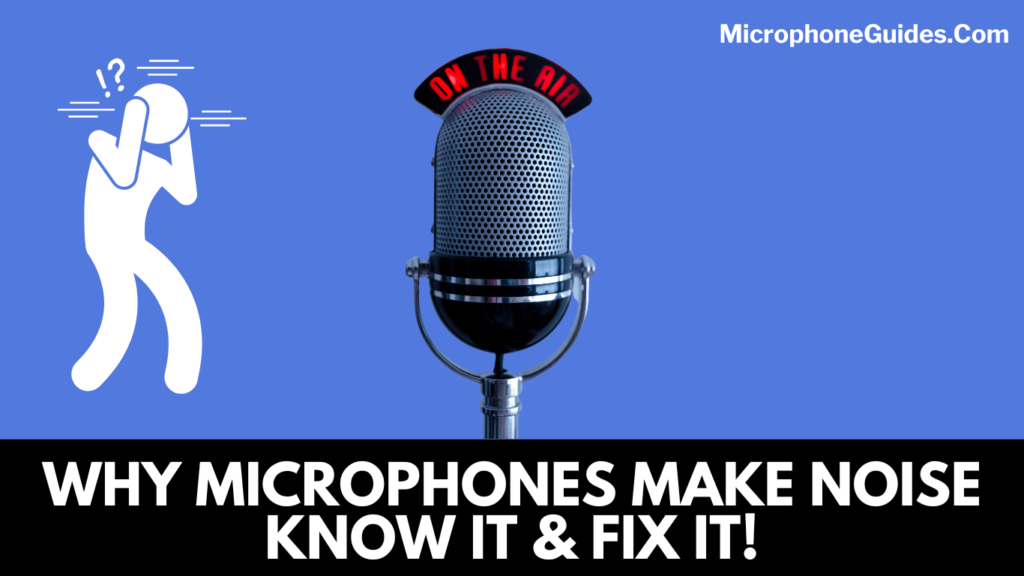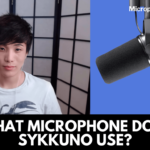Why Microphones Make Noise and How to Minimize Buzzing, Humming, and Hissing Sounds in a Microphone?
When we are growing, we tend to develop a dark and gloomy outlook of the world in general and of one person in specific. And when we reach out to someone for helping us out in calming down, they tell us that nobody is perfect, so we need to forgive people for their shortcomings and appreciate them for their positive traits.
Now that you have read the above paragraph thoroughly, can you tell me what the main theme of that paragraph is?
Of course, the theme varies from person to person, but the majority of people would have the same thinking about the theme, and that is ‘Nobody is Perfect.’
Yes! Nobody is perfect in this world. But you need to understand one more thing with this, and that is Nothing is Perfect. Feeling the difference?
Whenever we purchase a thing, we want it to be perfect, but that can not happen in real situations. No matter how many pounds or dollars you spend on it. Got the point?
It is. But you will never get a microphone that will completely be noise-free because every microphone produces a self-noise which we have dealt with this in this article.

Let’s begin the discussion!
Why Does My Microphone Make Annoying Noise?
Why microphone makes noise is quite a disturbing thing to think about. And the worst part of it is that you can never eradicate the noise. However, you can minimize it by purchasing a microphone with minimum ‘self-noise’.
So coming to the subject, microphones make noise whenever a beam of electrons passes through it and when air molecules fall on the diaphragm abruptly. With that mentioned, it is evident that you can’t eradicate the noise as the movement of electrons or air molecules is the reason for sound production.
Apart from the major reasons mentioned above, some secondary reasons like buzzing in the background or malfunctioning of a cable do cause humming or hissing sounds which are a cause of annoyance.
How to Minimize Humming, Hissing, or Buzzing Sound in a Microphone?
Ever heard about the things you can control and things you can’t control? Like you can control your behavior for sure, but you can’t control someone else’s behavior or attitude.
The same is the case with microphones. Self-noise produced by the movement of air molecules and electrons is not something you, or anyone else for that matter, can control. However, you can control some unwanted noise caused by your AC unit or cable.
For getting an idea of that, keep reading!
- Make Sure Background Noise is Minimum When You are Shooting a Video or Recording an Audio
Quietness in a room matters a lot whenever you shoot a video or record audio. Otherwise, your voice would continuously be interfered with by unwanted voices, and the audience would not be able to get what you are telling them.
This background noise could be the sound of a wind blowing outside and reaching your room from an open window, or it could be the self-noise of your AC unit.
Shooting in a room where people are talking, eating, or gossiping about their day can also interfere with your content. So it is a good idea to find yourself a space where you are alone, and the surrounding is quiet.
- Prefer Dynamic Microphone Over Condenser Microphone
Dynamic microphones pick sound waves from a specific direction, whereas condenser microphones are sensitive to audio signals and would pick up almost all the voices from the background and surroundings.
For instance, a unidirectional dynamic microphone will respond only to the sound signals coming from the front and will overlook all the signals coming from either side or the backside, and will show little sensitivity to noises in the background.
Condenser microphones will not dismiss sounds. They show sensitivity to all the sounds. For instance, if you are shooting a video and your mother is cooking curry for you at some distance, chances are that the condenser microphone will pick up the sound of that cooking range.
Apart from that, any noise, such as that of a heater, fan, AC, mouse, keyboard click, or chattering of leaves outside the room but near the window where you are standing, would be picked up by the condenser microphone. That is why it is preferable to use a dynamic microphone.
- Make Sure Your Audio Software and Recording Hardware are in Their Functional State
Hardware and software problems are almost negligible in most countries, but they occur to most people who live in areas of interrupted or faulty electric supply.
The best thing is it is easier for anyone to update software or hardware within a few easy-to-take steps, and that is why such problems are fixed without getting noticed by the majority.
If you find it hard, you can always call the professional living around your home or workplace to fix the problem for you. The majority of modern-day hardware lasts longer and doesn’t show such issues.
- Test Your Preamp Cables and Microphone Cables
This is one of the easiest things to do to stop the production of annoying noises. All you need to do is try out cables of your audio interfaces and microphone with different microphones and audio interfaces to see if the problem still exists.
This doesn’t take a lot of time and is the most efficient and inexpensive way of fixing a problem at home without doing any hard work. For swapping cables, you can always reach out to your friends.
Final Statement
The microphone makes upsetting noises whenever air molecules fall on the diaphragm or when a beam of electrons moves across the voice coil. These two reasons produce ‘self-noise,’ and you can’t control it. However, you can control other secondary voice-causing reasons. So to know why microphones make noise and, when they do, how they can be controlled, read this article!
William Souza Here, I Am Sound Specialist, Have Trained Many Musicians And Singers. I Write Blog Contents About Sound, Music, Microphone Reviews, Speaker Reviews, Sound Card Reviews And All About Sound/Music Reviews And Instruction. I Am Writing On This Blog MicrophoneGuides.com As On My Experience And Will Update More Information & Review About Different Microphones For Different Users.









